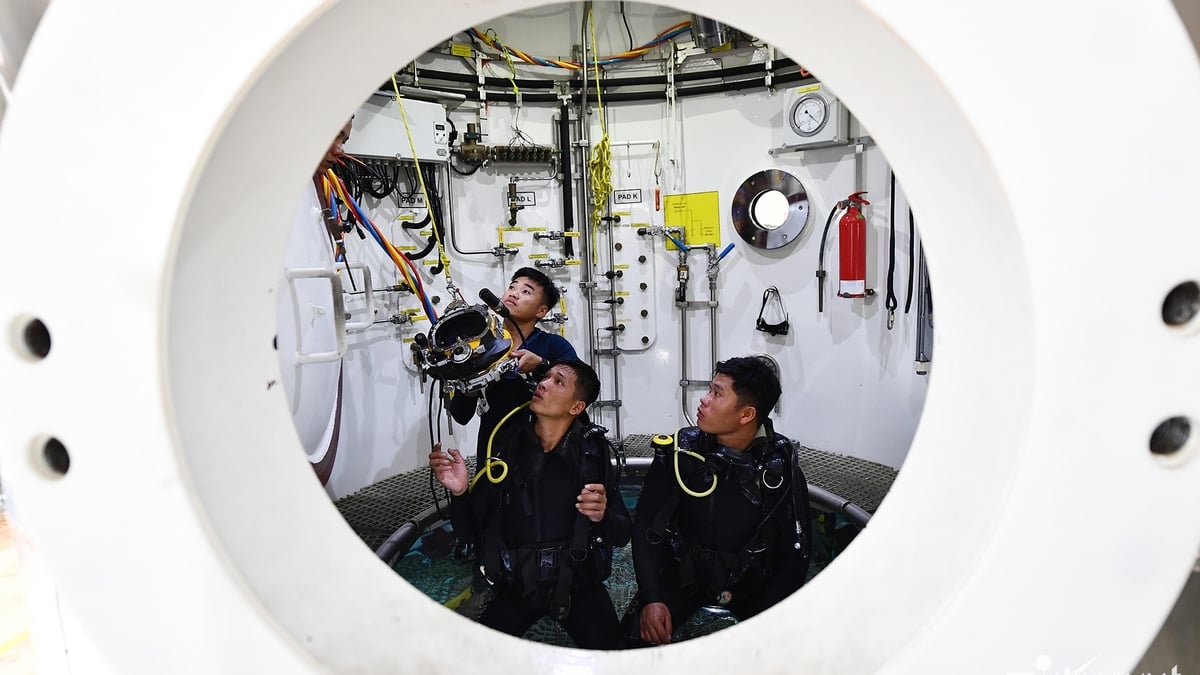
Consecutive cases of fish poisoning recorded
On July 24, a family group of 14 people traveled to Ky Anh beach, Ha Tinh and had dinner with seafood dishes such as eel, shrimp and oysters. A few hours after the meal until the next morning (July 25), many people in the group began to experience worrying symptoms such as numbness in the tongue and mouth, muscle aches, fatigue in the limbs and joints throughout the body. Some people also had digestive disorders (loose stools), a burning sensation in the throat and chest pain.
On the evening of July 25, 4 patients in the family (including 1 55-year-old female, 1 51-year-old male, 1 24-year-old male and 1 13-year-old male) quickly went to the Poison Control Center, Bach Mai Hospital for emergency care.
At the time of admission, all patients were conscious but had common symptoms of tongue numbness, body aches and were diagnosed with ciguatera poisoning. Other vital signs were within stable limits.
According to Dr. Nguyen Huy Tien, Poison Control Center, Bach Mai Hospital, after a day of intensive treatment, the health of all 4 patients has completely stabilized. Symptoms of tongue numbness and body aches have disappeared, leaving no localized neurological sequelae. All patients have been discharged safely and instructed to continue monitoring their health at home.
On the afternoon of July 26, Mr. VAT's family in Hai Phong, consisting of 4 people (Mr. T. and his wife and two children aged 16 and 19) ordered pre-processed red snapper to eat at home.
After eating from 1.5 to about 4 hours, all 4 people showed symptoms of abdominal pain, nausea, diarrhea, cramps and muscle pain throughout the body. In particular, Ms. H., the wife, and Q., the daughter of Mr. T., showed additional symptoms of sensory disturbances.
Ms. H. recounted that after eating, she felt a stomachache, nausea, diarrhea, dizziness, lightheadedness, and fainting, her blood pressure was unmeasurable, and then her hands felt burning every time they came into contact with cold water from the tap. Her whole body felt weak and she could not walk. When they arrived at the Poison Control Center, Bach Mai Hospital, all four people were found to have a slow heart rate.
Doctors explained that Ms. H.'s serious condition was initially due to arrhythmia and slow heart rate leading to reduced blood flow to the brain, causing a lack of oxygen to the brain. The Poison Control Center also diagnosed the patients with ciguatera poisoning. Currently, all patients are improving well and will be discharged soon.
Symptoms of ciguatera poisoning
Dr. Nguyen Trung Nguyen, Director of the Poison Control Center, said that ciguatera poisoning is a food safety hazard that people need to be aware of, especially in coastal areas. This is a poisoning condition caused by eating coral reef fish that have accumulated a very strong neurotoxin called ciguatoxin.
This toxin comes from a tiny microalgae called Gambierdiscus toxicus. This algae is eaten by many small fish, which are then eaten by larger fish, which are then eaten by reef fish such as barracuda, grouper, snapper, sturgeon, sardines, amberjack, eels, groupers, parrotfish, sea bass, sharks, blue-striped cleaner fish, etc.
"There are hundreds of fish species that contain ciguatera toxins, but less frequently, including jellyfish. Due to the process of "big fish eating small fish" as above, the toxin accumulates more and more in large fish species, leading to people eating enough to ingest a toxin that causes poisoning.
Ciguatera poisoning is the most common type of fish poisoning, more common than pufferfish poisoning, but doctors pay less attention to it. The most dangerous thing is that ciguatoxin is completely colorless, odorless, tasteless and is not destroyed by any processing method such as cooking, freezing or pickling. A fish carrying the toxin still looks completely normal,” said Dr. Nguyen.
Symptoms usually appear a few hours to a day after eating, including: Digestive (nausea, vomiting, abdominal cramps, diarrhea); neurological (numbness, tingling around the mouth, lips, tongue and then spreading to the limbs).
The most typical symptom is hot-cold sensation disorder, touching water or cold objects causes a sharp, burning pain like an electric shock. Cardiovascular symptoms with severe manifestations such as slow heart rate, low blood pressure, can be life-threatening.
Neurological symptoms can persist for months or even years, affecting quality of life.
Treatment focuses on resolving symptoms, especially ensuring breathing against the risk of muscle paralysis causing respiratory failure, ensuring heart rhythm because of possible dangerous arrhythmias, pain relief, etc. There is no specific antidote.
Doctor Nguyen recommends that prevention is the most important measure. With fish that are at high risk of causing ciguatera poisoning (barracuda, red snapper, sturgeon, anchovy, amberjack, eel, grouper, parrotfish, sea bass, shark, blue-striped cleaner fish, etc.), people should not eat much, and should not eat the fish's organs because that is where the toxins are concentrated.
If there are signs of suspected poisoning, go immediately to the nearest medical facility for emergency care and timely treatment.
Source: https://nhandan.vn/nhieu-benh-nhan-nhiem-doc-to-ciguatoxin-do-an-phai-ca-bien-post898457.html



































































































Comment (0)